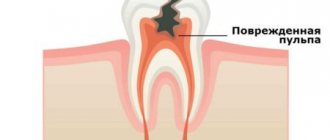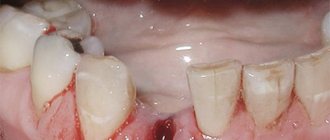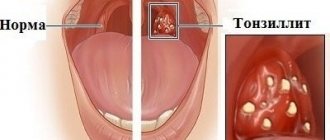Ear pain is a fairly common symptom. Painful sensations in this case give the patient a lot of unpleasant moments, and it is very difficult to simply “endure” such pain. It is noteworthy that pain in the ear is not always associated with diseases of the hearing organ. Such painful sensations can also be caused by other organs that radiate, that is, “giving off,” to the ear. A condition in which the ear hurts, but there is no inflammation in it, is called otalgia.
Otalgia can be caused by many reasons:
Temporal arteritis
The disease is an inflammation of the vessels of the temporal artery.
If the inflammatory process spreads to the ear artery, the patient will also experience pain in the ears. This disease is typical for older women. It causes blurred vision, headaches, pain in the temples, and increased fatigue. Make an appointment right now! Call us by phone or use the feedback form
Sign up
Along the branches of the vagus nerve, pain can radiate to the ear from the esophagus, thyroid gland, and organs of the cardiovascular system.
If you have ear pain, you should definitely consult with an otolaryngologist, since this condition may signal the presence of serious diseases in the body. If the ear is healthy, no abnormalities have been identified, and the pain does not go away, it is necessary to diagnose the nose, larynx, pharynx and, if necessary, other organs to identify the cause of otalgia. Further treatment will depend on the diagnosis.
Infectious diseases manifested by sore throat and ears
Often the root cause of a sore throat and ear on one side is infectious diseases. In practice, tonsillitis, scarlet fever, lymphadenitis, otitis media, eustachitis, diphtheria, pharyngitis, and mumps are usually encountered. The disease almost always begins with a sore throat. Its occurrence in the ear, as a rule, is a consequence of a secondary infection, when the disease has spread through the Eustachian tube.
Tonsillitis
Tonsillitis is a chronic inflammatory process affecting the tonsils of the pharyngeal ring. These formations act as a barrier that prevents the penetration of bacteria into the upper respiratory tract.
However, with their constant infection, they themselves become a problem for the body, constantly causing new relapses and spreading to other organs.
With tonsillitis, patients are concerned about:
- elevated temperature;
- pain in the throat and ears that increases when swallowing;
- severe swelling and hyperemia of the palate with involvement of the tonsils;
- formation of plaque and pustules on the tonsils.
Scarlet fever
Scarlet fever is an acute disease transmitted primarily from a sick person to a healthy person by airborne droplets. This infectious disease is characterized by such symptoms as intoxication of the body with toxins that bacteria produce during their life, as well as acute sore throat and small pinpoint rash. A complication of the disease can cause inflammation of the middle ear, which is accompanied by simultaneous pain in the throat and ears.
Diphtheria
Diphtheria is an infectious disease caused by the diphtheria bacillus or Loeffler's bacillus. The disease causes damage to the oropharynx; the larynx, bronchi, and skin are often infected.
Transmission of infection is carried out by airborne droplets. Contact transmission is no exception.
The disease is quite severe, especially in children. The reason for this is toxins released by bacteria. Intoxication of the body can cause serious complications, including disability and death. If the oropharynx is affected, large croup may occur due to blockage of the airways by swelling.
- Why does the jaw hurt on one side when chewing near the ear: what does pain on the right and left mean, how to treat it?
Otitis media, eustachitis
Often pain in the throat and ear on one side provokes eustachitis and otitis media. Inflammation in the middle ear can be either acute, when the temperature rises, or chronic, with frequent exacerbations, especially in the off-season. The nature of otitis media is most often secondary.
The infection penetrates from the pharynx into the tympanic cavity through the Eustachian tube. Inflammation of the auditory tube connecting the tympanic cavity to the nasopharynx is called eustachitis. It is the first cause of middle ear infection.
Mumps
Pain in the throat and ear is often caused by mumps. It affects children more often than adults. A characteristic feature of a viral disease is inflammation of the salivary gland, either on one side or both. Mumps is accompanied by the following symptoms:
- weakness and malaise;
- heat;
- an increase in the size of the salivary glands;
- inflammation of the submandibular, parotid, sublingual glands;
- pain when trying to touch the ear;
- hyperemia and swelling of the tonsils;
- painful when chewing and swallowing;
- due to swelling, the patient's head is slightly tilted towards the affected part.
Lymphadenitis
Lymphadenitis is inflammation of the lymph nodes due to exposure to pathogenic microflora. Lymphadenitis of the cervical nodes causes quite severe pain that radiates to the pharynx and auditory canal. The following symptoms stand out:
- when palpating the nodes, their soreness and enlarged state are noted;
- the skin over the affected area is hyperemic;
- shooting in the ear on one side and sore throat;
- it is impossible to calmly turn or tilt your head;
- a purulent abscess may appear at the site of the lymph node;
- fever or chills.
Pharyngitis
Pharyngitis is an inflammatory process in the mucous membrane and lymphoid tissue of the pharynx. It is the most common cause of sore throat in both children and adults.
The following symptoms are identified:
- pain in the throat and ear interferes with swallowing movements;
- constant dry cough, sore throat;
- the pharyngeal mucosa is swollen and red, ulcers or papules appear;
For more information about ear and throat diseases, watch the following video:
Ear pain relief, first aid
Doctors usually recommend Otipax drops.
bury it in the ear, traditional medicine - there are many ways to warm it up. It is absolutely unacceptable to do all this before visiting a doctor. There are a number of reasons for this ban.
In case of a purulent inflammatory process, hot compresses on the area of the ears and nearby will provoke the activation of pathogenic bacteria and increase the rate of their reproduction. As a result, the patient’s condition will worsen as much as possible due to the spread of inflammation to all nearby tissues of neighboring organs.
If the eardrum has ruptures, punctures, drops will not bring relief. They should not be used without a doctor’s recommendation if there is acute pain in the ear.
To calm the pain before visiting a doctor, you are allowed to take Ibuprofen, but only a tablet. Doctors' recommendations:
- Place vasoconstrictor drops inside the nasal openings: Nazol, Galazolin, Naphthyzin.
- The drops will reduce the swelling of the mucous membranes of the eustachian passages, help equalize the pressure, and stop the development of inflammation.
- The pain syndrome is partially reduced if you cover the ear with a napkin, protecting it from contact with hair, clothing and wind.
- To prevent the development of infection, a sore throat should be rinsed with Miramistin, Chlorophyllipt or saline solution.
| A drug | Photo | Price |
| Ibuprofen | From 15 rub. | |
| Nazol | From 160 rub. | |
| Galazolin | From 37 rub. | |
| Naphthyzin | From 23 rub. | |
| Miramistin | From 218 rub. | |
| Chlorophyllipt | From 115 rub. |
What to do if you feel pain
Most obviously, it is difficult to find a person on the planet who would never complain of a sore throat.
Each person's position is individual in how his body will react to pathology.
Some patients can restore the healthy state of their organs in a short time.
Others may experience worsening and the addition of other symptoms, including ear pain, head pain, and aching joints.
And for some, perhaps, some time after the signs of the disease disappear, it turns out that complications have appeared in some organs.
Practice shows that the ears experience the consequences of diseases most often. And hearing loss is one of the first sad consequences of not taking painful body signals seriously.
This means that you should not delay visiting the doctor. Determination of the cause of the illness and subsequent treatment will be carried out after a thorough diagnosis.
Unilateral pain in the throat and ear is observed in various otolaryngeal diseases
Sinusitis
A disease in which one or more sinuses become inflamed is called sinusitis. The pathology is inflammatory in nature and develops as a complication of various bacterial or viral infections. Most often, this disorder is diagnosed in children and adolescents aged 4-15 years. Sinusitis is a whole group of diseases that are classified according to the location of the inflammatory process:
- Sinusitis
is inflammation of the epithelium of the nasal sinuses of the upper jaw. - Frontitis
is a lesion of the mucous membrane of the frontal sinus. - Ethmoiditis
is sinusitis of the ethmoid bone cells. - Sphenoiditis
is a pathological process in the sinuses of the sphenoid bone.
With sinusitis, the patient experiences characteristic symptoms indicating the development of inflammation in the paranasal sinuses:
- There is an unpleasant sensation in the nose. Depending on the location of the lesion and the number of sinuses involved in the pathological process, the pain can be localized in the bridge of the nose, above the eye or between the eyebrows. In this case, the discomfort increases sharply when pressing on the inflamed area or when tilting the head.
- Cephalgia. The headache is dull or aching and gets worse in the evening.
- With sinusitis, there is often discomfort in the throat and ear area on the affected side.
- Impaired nasal breathing. Due to nasal congestion, the patient's voice acquires a characteristic nasal sound.
- With normal outflow of pus from the sinuses, the patient experiences yellowish-green or brownish discharge with an unpleasant putrid odor from the nose.
- Low-grade or febrile fever, weakness, chills.
Treatment for sinusitis should be aimed at stopping the inflammatory process and ensuring the free outflow of purulent exudate from the sinuses. For this, various antibacterial or antiviral drugs are used: Amoxicillin, Meropenem, Ceftriaxone
etc.
If conservative treatment does not have an effect, then surgical drainage is performed. It is performed to cleanse the sinuses of pus and collect material to identify the pathogen. After the analysis, the specialist can select the most effective drug for the treatment of sinusitis.
Pain in the throat and ear on one side is a fairly common symptom, which may indicate the development of various diseases of the upper respiratory tract, hearing organs or lymphoid system. If any signs of pathology appear, it is recommended to consult a specialist.
Causes of pain
Pain in the ear and throat rarely manifests itself as an independent disease. Most often, such sensations do not arise suddenly; they are preceded by a general deterioration in health, fever, nasal congestion, and headaches. Therefore, it is extremely important to understand that if the throat and ear hurt on one side, taking symptomatic remedies such as ear drops, throat sprays or special lozenges will not be enough . It is necessary to find out the cause of the pain and treat the problem comprehensively.
Possible causes of sore throat and ear pain include:
- otitis or tubotitis;
- acute and chronic pharyngitis;
- angina;
- measles;
- diphtheria;
- scarlet fever;
- chicken pox;
- acute sinusitis;
- lymphadenitis;
- allergy.
Sore throat and ear pain can also be caused by inflammation of the nerves of carious teeth and other oral diseases. However, the pain is not too intense. Diseases of the cardiovascular system and problems with blood pressure (hypotension, hypertension) also cause throat constriction.
- Why does the jaw hurt near the ear on one or both sides, treatment options
Internal otitis and tubotitis are characterized by increased pain in a supine position and at night; the patient often has blocked ears, and throbbing pain may appear. With tubotitis, a person may notice that his ear itches severely, almost incessantly. Even this one symptom is a reason to contact a specialist, and even more so in combination with an unpleasant sensation in the larynx.
With pharyngitis and sore throat, on the contrary, the throat is compressed, the patient has difficulty swallowing, and a dry, obsessive cough may appear. As you know, the nose is an organ closely connected with the ear and throat through narrow channels. Therefore, if a patient has a stuffy nose for a long time, the problem should be looked for in inflammation of the paranasal sinuses. In addition, with various forms of sinusitis, headaches may occur, which can also lead to the correct diagnosis. In the same case, if the patient begins to itch and develop various skin rashes, we may be talking about incipient infectious diseases or a severe allergic reaction.
If your throat and ear hurt, you should immediately contact an otolaryngologist to identify the exact source of infection and the nature of the disease. The doctor will conduct examinations and tell you what to do in a given situation. Otherwise, the disease can become chronic and cause a number of various complications. In addition to the most common diseases, it is possible to develop more serious ailments, the identification of which requires a comprehensive examination.
Ear pain when swallowing: provoking factors
Many different factors can cause ear pain when swallowing. They provoke inflammation in the pharynx, which is the main cause of discomfort. This:
- viruses;
- bacterial infections;
- decreased immunity, as a result of which opportunistic bacteria are able to actively multiply and infect mucous membranes;
- smoking;
- inhaling too hot or cold air;
- work in hazardous industries.
Sometimes even a long stay in a room with dry air can negatively affect the condition of the mucous membranes of the nasopharynx, since saliva may not cope with the function of moistening them.
Diagnosis
It would be a great misconception and self-deception for a person if he independently diagnoses himself, relying on his intuition, experience of past illnesses or the advice of friends.
It is possible to choose treatment wisely only after establishing the exact cause of the ailment. Indeed, often, medications against one ailment turn out to be powerless against another.
Moreover, “shots” or heaviness in the ear with pain in the pharynx should already indicate a connection between inflammatory processes in these organs.
The doctor will make a diagnosis primarily based on the patient's complaints. He will carefully examine the patient's nasopharyngeal area.
Often, you have to turn to laboratory readings. This will require taking a smear for bacterial culture from the almond inflammatory surface.
And after this, the specialist determines the cause of the ailment, the severity of the inflammatory process and prescribes adequate treatment.
After establishing the exact cause of the ailment, you can choose the right treatment









